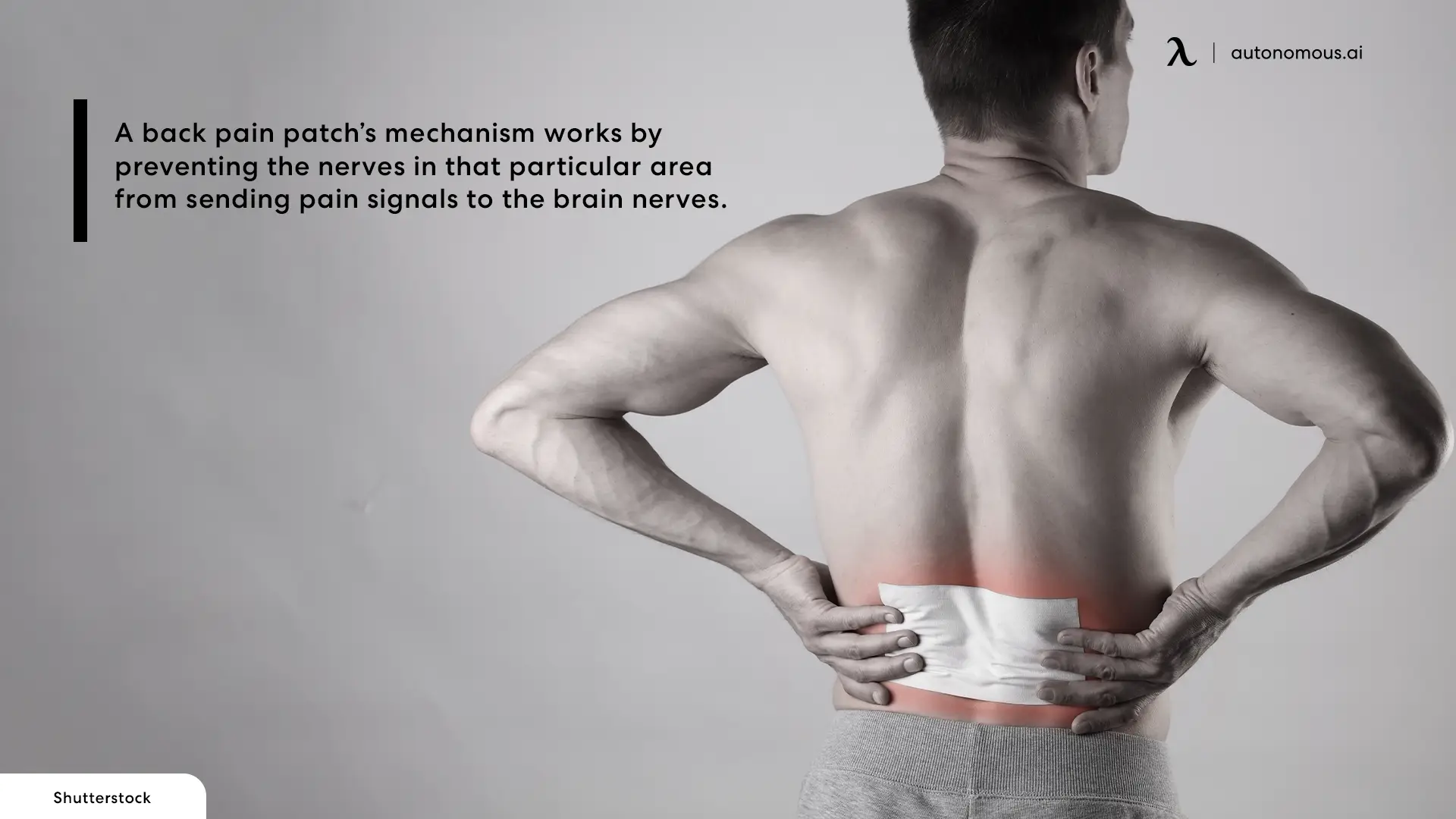
Pros and Cons of Back Pain Patches - How to Use Properly
There are multiple side effects of leading a sedentary lifestyle. And even if you spend a healthy portion of your day moving around and being active, sitting in front of the screen can give you back pain on some gloomy days. And for those who haven't been paying attention to office ergonomics, back pain might have become a constant part of their routine by now. Hence from the best lumbar support for chairs to a mesh office chair lumbar support, a standing desk that cuts your sitting time by half, you will find a bunch of solutions to emerging back pain.
Another one is the back pain patches. Since an ergonomic chair is just an aid to prevent uncomfortable posture that is the root cause of back pain, there also needs to be proper solutions to back problems. Back pain relief patches are a well-known cure for acute and chronic back pain. But insufficient awareness about back pain patches, their uses, and the pain patch side effects might confuse most people. This article will cover all you need to know about a lower back pain patch and the pain relief patch side effects to help you make the right decision.
What Are Back Pain Patches?
A back pain patch is not conventional medicine, as you could see in the older times, but these patches work miraculously when stuck to the targeted areas. A back pain patch is a transdermal medication transmitted through the skin. A back pain patch is useful for both acute and chronic back pain. The adhesive side is placed on the targeted area, and soon you find yourself relieved from pain. This gradual transmission of medicine ensures the pain is kept at bay for a longer time compared to oral medicines, which enter the bloodstream in a single go and might lose effect soon. However, while the idea of a back pain patch seems genuine, there are also side effects related to it.

Side Effects of a Back Pain Patch
A back pain patch also has certain side effects that occur physically and internally. Here are a few side effects of a back pain patch that you may experience, but these may vary for different patches.
Application Side Effects
- Burning or tingling sensation on the site
- Blisters due to sweat or adhesive
- Bruising after the patch is removed
- Pigmentation in the area where the patch was applied
- Irritation or rash that may cause itching
- Redness which goes away
All these application side effects are on an external level and go away soon after the patch is removed. While in some cases, the application can cause severe allergies externally.

Internal Side Effects
- Dizziness due to medicine effect
- Confusion and inability to focus
- Weakness
- Fatigue
- Nausea or vomiting
- Visual disturbances
The effect and severity of these side effects may vary from person to person, and sometimes you will be asked to stop using the back pain patch if the side effects are severe.
Do Back Pain Patches Work?
Back pain patches can be an excellent substitute for taking painkillers orally. Because patches do not have the same adverse effects as oral painkillers, some people prefer them. However, some people might want to avoid patches because they can irritate their skin.
Depending on the patient, the type of medication a doctor recommends for back pain will vary. For treating localized pain that doesn't spread to other areas, patches can be a good substitute for other medications. However, a back pain patch isn't a magical solution to eliminate pain; you need to take other measures to eliminate the cause and factors that promote back pain. Doctors who give back pain patches to patients also recommend using office chair accessories such as cushions, back support, or a cooling pad to avoid muscle stiffness and a reclining office chair to help with the smooth backrest rather than a simple office chair.
How Does a Back Pain Patch Work?
A back pain patch, rather than entering your bloodstream (case with an oral medicine), works through slow transmission of medicine through the skin layers. The adhesive that sticks to the skin holds the skin surface tightly and ensures all the medicine on the patch surface enters the skin gradually. This mechanism works by preventing the nerves in that particular area from sending pain signals to the brain nerves. Hence a person can forget they were having any pain in that area. This is also why the back pain patches are strictly asked to be placed on the target area. Here are some tips to help improve the action of a back pain patch.
- Always adhere to the instructions exactly.
- Never wear them for longer than is advised, as the adhesive may cause some serious allergies.
- Before applying the patch, clean and dry the afflicted area, this will help in absorbing the maximum amount of medicine and also ensure the patch sticks properly.
- Patches should not be placed over open wounds or cuts.
- If you plan to use patches for more than a few days, consult your doctor or pharmacist first.
- While wearing a pain patch, avoid using an electric blanket or adding extra heat to the area.
- Never cut a patch, especially one containing fentanyl, as this may result in incorrect dosage.

Why Use a Back Pain Patch?
Back pain patches can be a good substitute for oral painkillers. They are effective for both acute and ongoing pain. In addition, these patches are not significantly affected by the rest of your body because they only address localized discomfort. This makes them highly suitable for people who cannot take oral medicines or are allergic to any ingredient in a back pain patch. Secondly, back pain patches are also more effective and quicker when relieving the pain, which often is slowed down or very short-lived in the case of an oral back pain medicine.
Subscribe for a 10% discount on your first order.
Sign up for our weekly update and be the first to know about our specials & promotions.


/https://storage.googleapis.com/s3-autonomous-upgrade-3/production/ecm/240409/smartdesk-one-apr-2024-offer-1920x540-CTA.jpg)
/https://storage.googleapis.com/s3-autonomous-upgrade-3/production/ecm/240409/smartdesk-one-apr-2024-offer-720x1200-CTA.jpg)
/https://storage.googleapis.com/s3-autonomous-upgrade-3/production/ecm/240415/bulk-order-apr-2024-offer-720x1200-CTA-min.jpg)
/https://storage.googleapis.com/s3-autonomous-upgrade-3/production/ecm/240415/pod-offer-apr-2024-720x1200-CTA.jpg)
/https://storage.googleapis.com/s3-autonomous-upgrade-3/static/upload/images/new_post_author/admin-1.png)